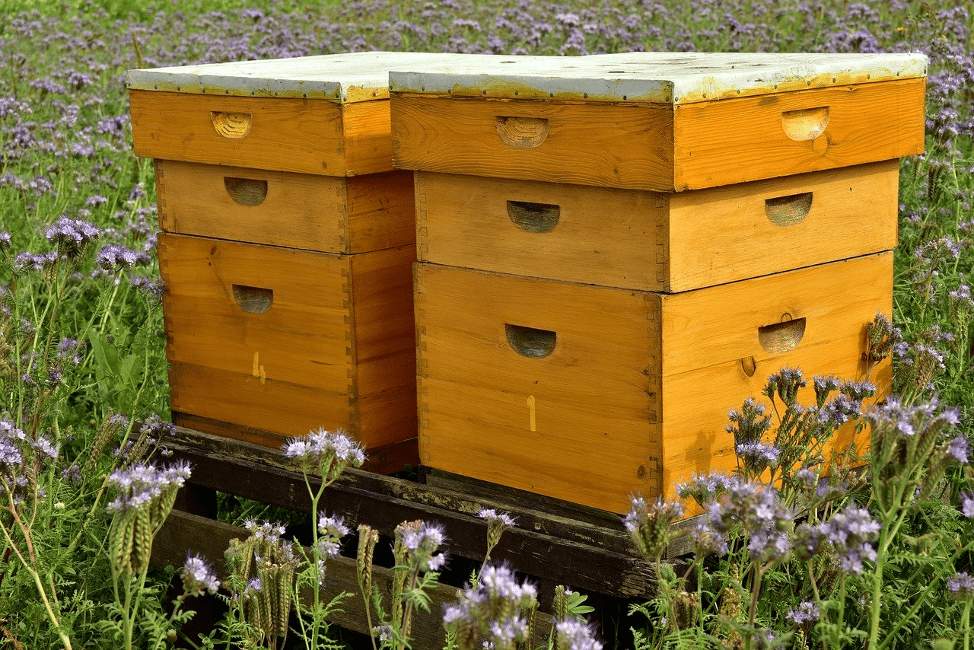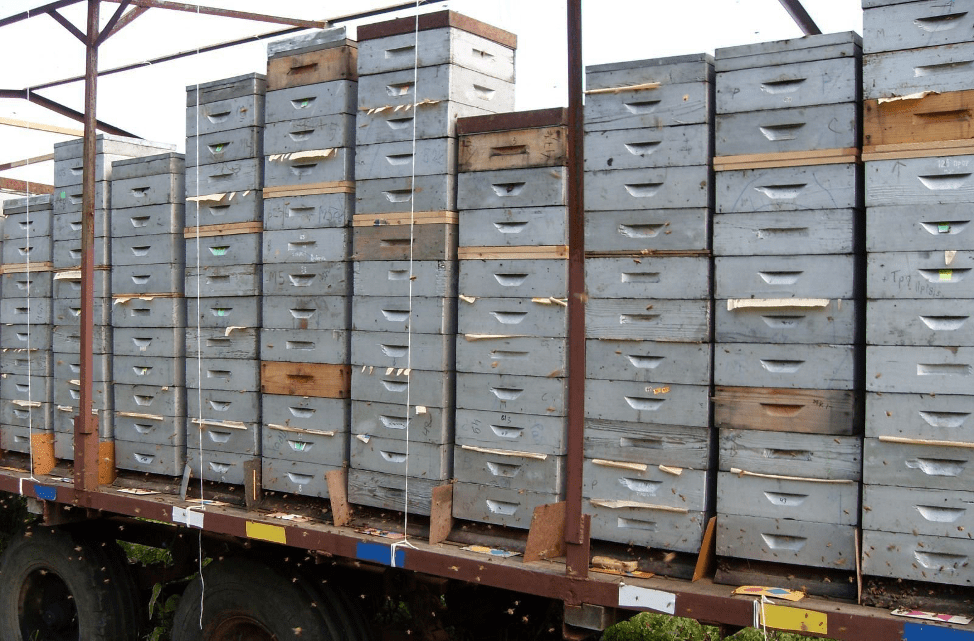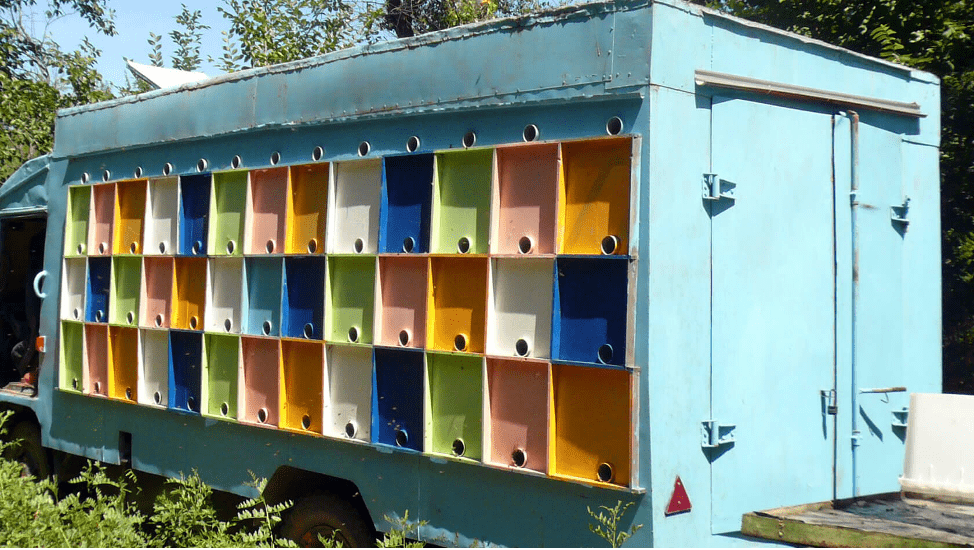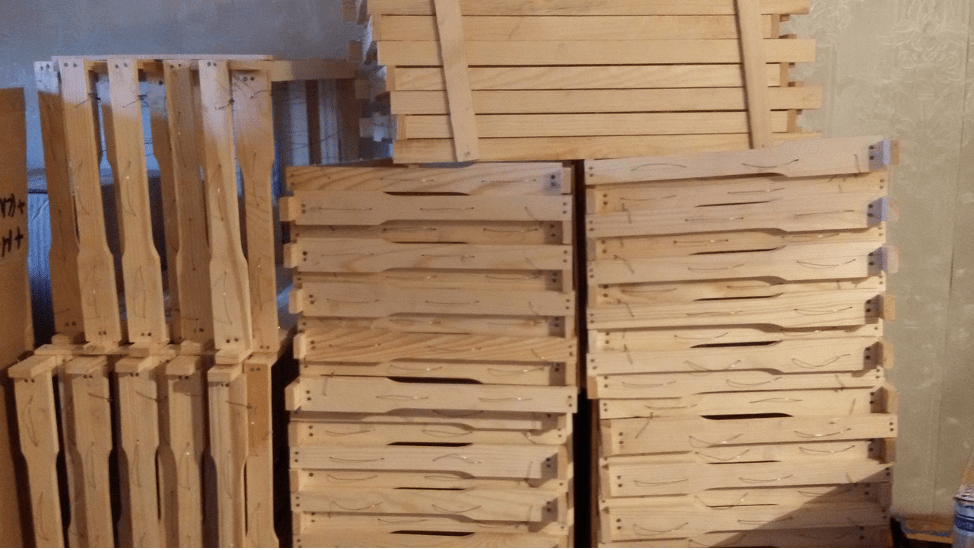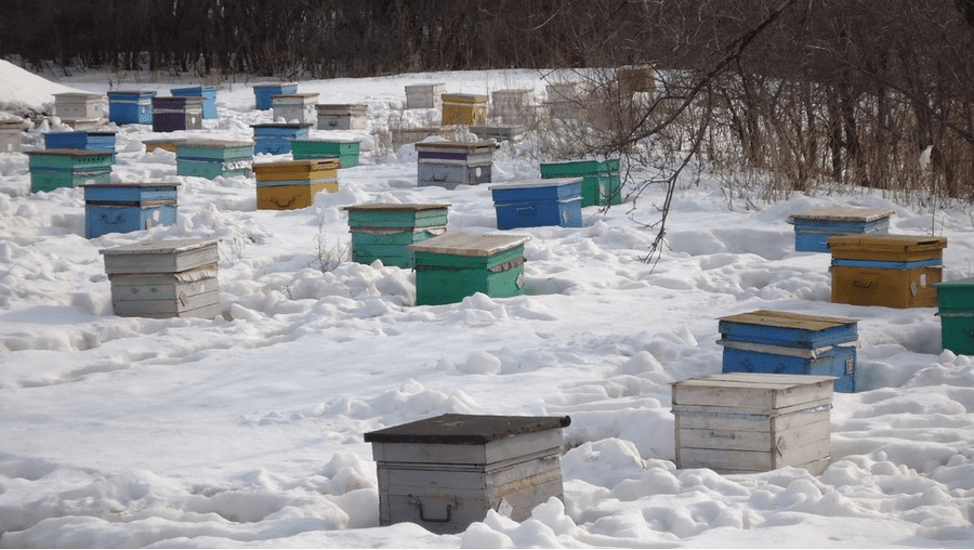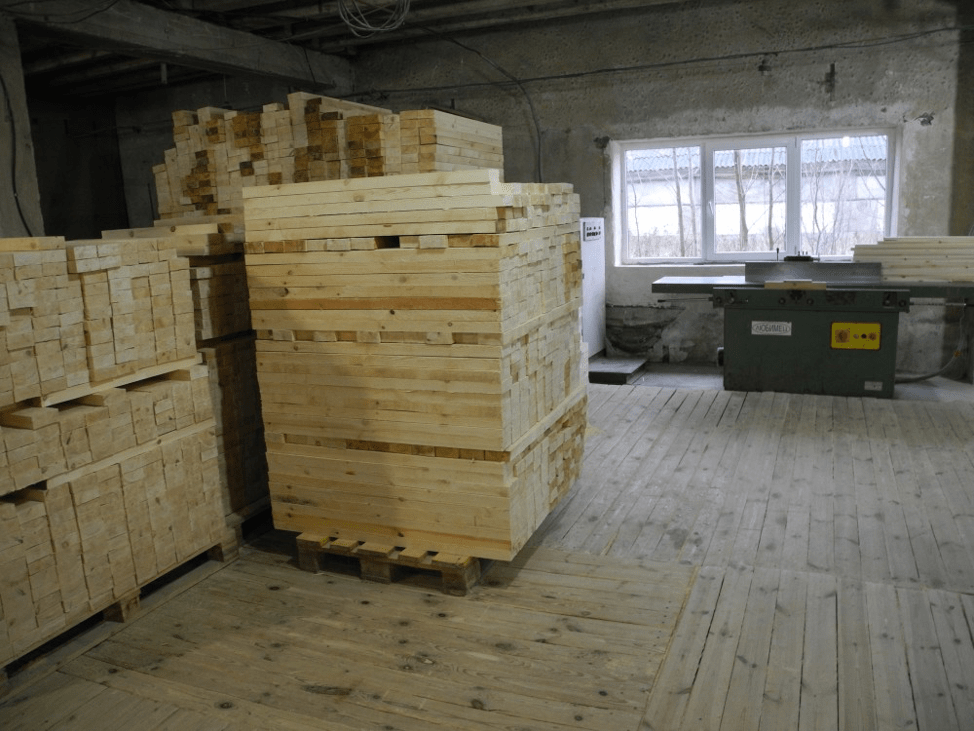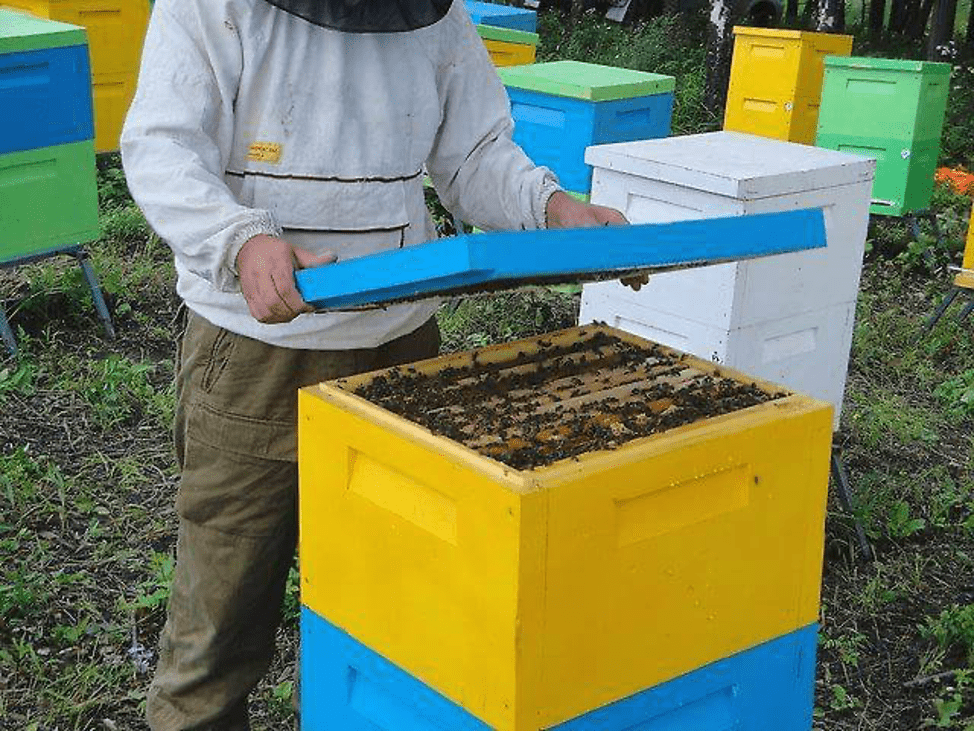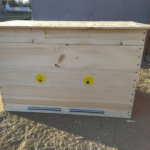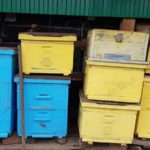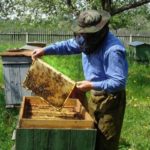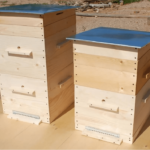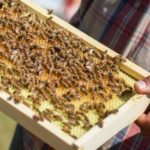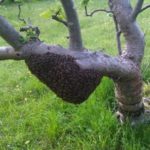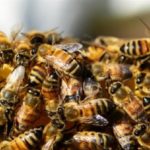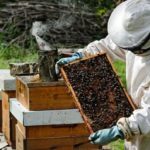A novice beekeeper needs to study a lot of different information about insect houses and their families. First of all, you need to understand what a bee hive is and what types there are. The choice depends on various factors - the climate of the region, the materials used, the breed of the selected individuals, the manufacturer. Some designs can be made independently.
What is a hive and what does it look like?
A hive is a closed structure, an artificially created dwelling intended for honey bees. Houses come in different types and types, depending on how it is arranged inside.
Attention! In conversation, the term is used to describe the nest of domesticated and wild individuals. But the scientific literature defines a clear boundary - a “nest” is the habitat of wild insects, and a “hive” is used to define the homes of domestic bees.
In nature, families inhabit caves, tree hollows for a long period of time, and build houses on branches and other places. Separated families prefer to settle close to the parental “home”. More details in the video.
Varieties
Beekeepers are constantly improving the design of bee houses, so new types of houses are appearing and old options are being improved. Initial classification:
- non-removable - rarely used, made in large sizes, difficult to move from apiary to apiary (these are usually designs of old types of hives, modern ones are significantly different);
- vertical - mobile, collapsible, allow you to control the number of individuals in the family, move the home from place to place (important when it is necessary to change the place where nectar is collected due to the flowering of trees and plants);
- horizontal – small, recommended for use by novice beekeepers.
In apiaries, several familiar designs are most often used - Dadanovsky, rue, alpine, cassette and bed hive. Each has distinctive structural features, advantages and disadvantages.
Dadanovsky
This type of bee house is used more often than others. Structural features and functional nuances:
- vertical type housing;
- recommended material of manufacture – spruce;
- inventor - French beekeeper Charles Dadan;
- suitable for growing families with a large number of individuals;
- They use 12 frames and double walls with insulation (for cold regions or wintering).
Some beekeepers come to the conclusion that Dadan's frames are too big; some recommend updating the design of such a bee house.
Hive rue
This option was developed by beekeepers more than 150 years ago. The design is simple, the frames are more convenient than those of the Dadan type structure. Advantages:
- easy to make at home;
- the number of bees is growing faster than in other houses;
- honey collection is higher;
- You can, if you wish, form a family with two queens at the same time.
Attention! The hives are easy to transport. But for beginners, it can be difficult to keep track of filling the home with honey, which leads to hypothermia in winter and death of individuals.
Alpine hive
This option was developed by the Frenchman Roger Delon. The structure is multi-body - this means that the beekeeper can install several buildings on top of each other at the same time. Peculiarities:
- accepted dimensions - 30 cm by 30 cm;
- vertical type structure;
- horizontal tap hole, 0.7 cm;
- light weight (with filling the weight is about 20 kg);
- It’s easy to care for – clean the structure, collect honey.
The structure of the home allows you to maintain a microclimate. The disadvantages include a significant number of frames (up to 48 pieces are required). It is difficult to collect a package with queens and families.
Cassette hive
The main advantage of cassette housing is the reduction in insect incidence due to the thin walls of the buildings. Due to this, honey-bearing individuals can control the microclimate independently. This version of a bee house is used in areas that are not suitable for bee breeding.
Beehive - sectional view
Externally, bee buildings of this type look like chests, the top part of which is hinged. The side walls are thicker than others and are insulated with pillows. The main feature is the horizontal placement of the nest, the elongated body. One can accommodate two families, separating them with a separate partition. Advantages:
- easy to clean housings;
- the location of the honeycombs allows them to be quickly replaced;
- the required level of insect productivity is ensured;
- Bee families can be quickly propagated.
However, in such houses it is necessary to separately think through the ventilation system. For some buildings, a vertical arrangement of frames is used.
Selection rules
A novice beekeeper needs to decide on the appropriate method of raising bees. The type of structure of the bee hive is of decisive importance. You need to study the main requirements and rules. For a small apiary, you can use homemade housing. More details in the next video.
Size and number of frames
The productivity of insects depends on this parameter. More often than others, Dadanovsky variants measuring 47 cm by 30 cm are used. Such elements work on different types of bee dwellings - from multi-hull structures to horizontal beds. The next most popular size of frames for bees is 47 cm by 23 cm. They are usually installed on structures with several buildings.
Attention! For the smaller type it is more difficult to find suitable bee kits.Therefore, beginning beekeepers are advised not to experiment with their first apiary and families, but to purchase standard Dadan blocks.
According to climate characteristics
Some regions are less suited to beekeeping. Nuances to consider:
- in case of early frosts on the territory (permanent or probable), it is necessary to install buildings with thick walls or with the possibility of insulating structures (for example, double-walled with thermal insulation on the side walls);
- if unfavorable conditions are considered the norm in the region, you need to be more careful about the size of the buildings (especially if the home consists of several elements);
- for warm regions, you can choose any hive option.
For novice beekeepers, Dadanov’s version is suitable - it can be insulated, and it’s not difficult to find the constituent elements.
By material
Some time ago, it was possible to make a bee house only from natural materials - branches, straw, cork, clay and others like that. Wood buildings appeared in regions with low temperatures. Requirements:
- dry;
- free from mold, cracks, rotten rot (other similar damage);
- the surface is smooth, knots will need to be removed - such elements interfere with the movement of insects and can damage the legs and wings of bees;
- there should also be no chips or roughness;
- The recommended thickness of the parts is up to 5 cm (some designs require a different thickness).
Attention! Despite the fact that many new and varied materials have appeared, wood remains the most suitable. Wood helps create a microclimate as close to natural as possible and ensure normal air exchange.
The most suitable wood species are spruce, willow, linden, poplar and cedar. Reeds, sandwich panels, fiberboard, and plywood are well used. In most cases, it is necessary to additionally process the details of the wooden elements with sandpaper.
By manufacturer
There are quite a lot of modern manufacturers of various groups of beekeeping products on the market. In each region you can find a suitable supplier. For example:
- Zukunft Bienen from Germany – production of horizontal and vertical bee houses (Finnish manufacturers are also popular);
- from Russia - “Pcheloulik” in the Krasnodar Territory, “Bee Equipment Factory” in the Republic of Bashkortostan, “Rural Technologies” from Moscow, many others;
- handicraft production (at home) is also widespread - most types of hives can be assembled independently, so experienced beekeepers can make housing to order or for retail sale.
When buying a house, a novice beekeeper is recommended to choose simple designs of small size. When choosing, you need to pay attention to the following points:
- it is necessary to evaluate in advance the possibility of carrying hives and maintenance costs;
- the breed of bees selected - some have specific behavioral characteristics, so it is recommended to purchase certain options for hives (it is important to study the features and recommendations of beekeepers in advance);
- the duration of the honey harvest season in the region.
Attention! In regions with a cool climate, the honey collection period is quite short, so there is no need to purchase multi-frame stationary buildings for large bee families.
A hive is an artificially created home for bees, which is installed to collect honey and other bee products. There are different design options that differ in size, materials, and internal structure. It is necessary to familiarize yourself in advance with the climate and the requirements of the selected insect breed.

